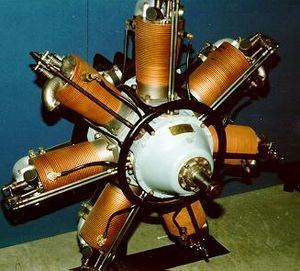 | ||
The ABC Wasp was an experimental 170 hp (127 kW) seven-cylinder radial engine designed by the noted British engineer Granville Bradshaw, and primarily built by ABC Motors Limited. Twelve experimental ABC Wasp engines were delivered to Guy Motors on 19 April 1918.
Contents
Design and development
The ABC Wasp was one of the first large non-rotary air-cooled radials. At a weight of 290 pounds (131 kg), it had a reasonable power-to-weight ratio at 0.6 horsepower per pound. This World War I–era engine is noteworthy because it was one of the first in which the cylinders were coated with copper in an attempt to dissipate heat. The ABC Wasp never evolved beyond the experimental stage, but it was the predecessor of the unsuccessful Dragonfly engine.
Variants
Applications
Specifications (Wasp I)
Data from Lumsden.
General characteristics
Components
Performance
References
ABC Wasp Wikipedia(Text) CC BY-SA
